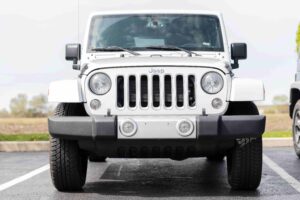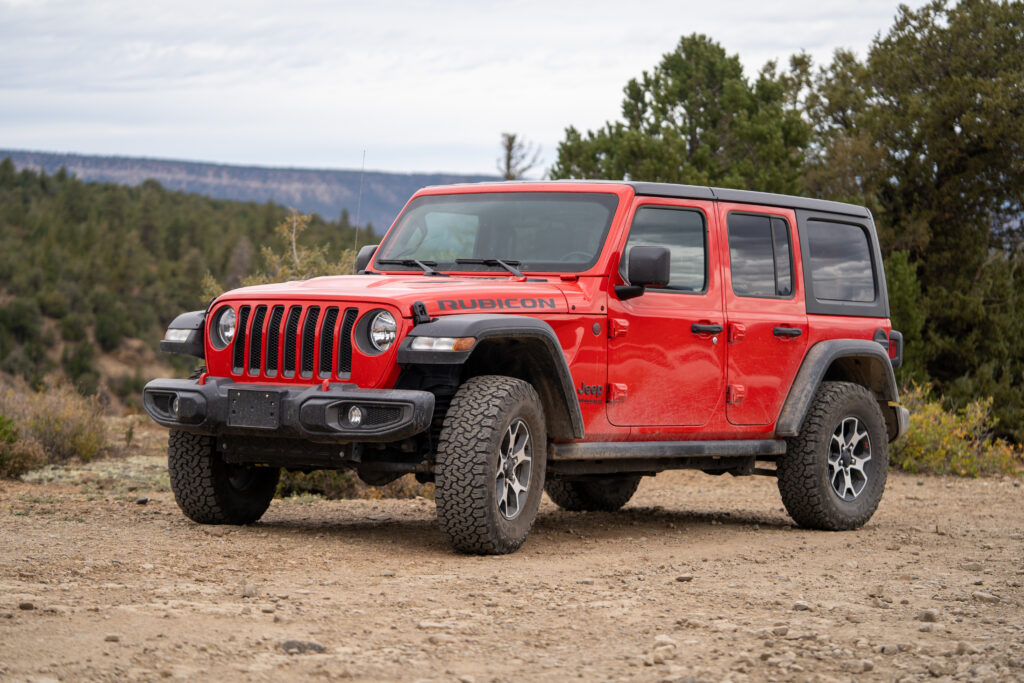How Big Of Tires Can You Put On A Stock Jeep Wrangler?
How Big of Tires Can You Put on a Stock Jeep Wrangler? Jeep Wranglers are renowned for their off-road capabilities and the vast customization options available for owners looking to enhance their performance and aesthetic appeal. One of the most common questions among Jeep enthusiasts is: “How big of tires can I put on a stock Jeep Wrangler?” This is a great question, as the size of the tires you choose can significantly affect your Jeep’s handling, fuel efficiency, and off-road capabilities. Let’s dive into what you need to know about upsizing your tires without modifying other components of your Jeep.
Understanding Stock Jeep Wrangler Specifications
Before making any modifications to your Jeep Wrangler, it’s crucial to have a comprehensive understanding of its stock specifications. These specifications, including tire sizes, vary depending on the model and year of your Wrangler. For instance, if you own a Jeep Wrangler JK, which was produced from 2007 to 2018, the stock tire sizes typically fall within the range of 29 to 32 inches in diameter. However, it’s worth noting that specific trims or editions might deviate slightly from this range due to factory options or packages.
On the other hand, if you have a newer Jeep Wrangler JL, introduced in 2018 and still in production, you can expect slightly larger stock tire sizes compared to the JK models. Generally, the stock tire sizes for JL models hover around 31 to 33 inches in diameter, providing a bit more ground clearance and off-road capability right off the assembly line.
Understanding these stock specifications not only helps you appreciate the engineering choices made by the manufacturer but also serves as a crucial foundation when considering any aftermarket modifications or upgrades for your Wrangler. It ensures compatibility, maintains optimal performance, and prevents any potential issues that may arise from mismatched components or alterations.
Ideal Tire Sizes for a Stock Jeep Wrangler
For those looking to upsize without undertaking additional modifications.
- Jeep Wrangler TJ (1996-2006). Original equipment on stock TJ Wranglers consists of 29-inch tires, providing a balanced blend of performance and clearance. For those seeking a modest upgrade, transitioning to 31-inch tires is usually seamless without necessitating any alterations. However, if you aspire for more substantial enhancements, such as upgrading to 33-inch tires, it’s prudent to anticipate potential adjustments. This may involve installing a lift kit to accommodate the larger tires or modifying the fenders to ensure adequate clearance and maintain optimal handling and aesthetics.
- Jeep Wrangler JK (2007-2018). Stock Jeep Wrangler JKs typically come equipped with either 29 or 32-inch tires, providing moderate off-road capability. Upgrading to 33-inch tires can be done without any modifications, offering improved traction and ground clearance. However, aspiring for 35-inch tires would likely necessitate a 2.5-inch lift kit installation to prevent rubbing against the wheel wells and to ensure optimal clearance for enhanced off-road performance.
- Jeep Wrangler JL (2018-Present). The JL models typically come equipped with stock tires ranging from 31 to 33 inches in diameter. If you’re considering upgrading, you’ll find that transitioning to 35-inch tires usually doesn’t necessitate a lift kit. However, opting for larger sizes, such as 37 inches, will almost certainly require additional modifications. These could include installing a lift kit to accommodate the increased tire size properly. Moreover, you might need to consider upgrading your brakes and suspension components to ensure optimal performance and safety with the larger tires.

Factors to Consider When Upsizing Tires
- Clearance. When considering upsizing your tires, the primary concern lies in ensuring adequate clearance within the wheel wells. Opting for larger tires can potentially lead to contact between the tire and the fender or suspension elements, particularly noticeable during turns or when traversing uneven surfaces. This can not only cause premature tire wear but also potentially compromise vehicle handling and safety if left unaddressed. Therefore, careful consideration of clearance and potential modifications may be necessary to accommodate larger tire sizes effectively.
- Warranty Coverage. When upgrading your tires, it’s important to consider all of the factors involved. Especially your Jeep factory warranty or your Jeep Factory Extended Warranty, you wouldn’t want to make any decisions that could potentially void your warranty.
- Speedometer Calibration. Upgrading to larger tires can significantly impact the accuracy of your vehicle’s speedometer readings. This occurs because the circumference of larger tires is greater, resulting in each rotation covering more ground compared to stock tires. Consequently, your vehicle’s speedometer will display a lower speed than your actual velocity. This discrepancy can lead to unintended speeding violations or inaccurate mileage calculations. To ensure precision and compliance with traffic laws, it’s advisable to recalibrate your speedometer after installing larger tires.
- Drivetrain and Braking. Opting for larger tires on your Jeep introduces additional weight, which exerts more strain on your vehicle’s drivetrain components. This increased strain not only affects the overall performance but also impacts your Jeep’s braking system. With the added weight, your Jeep’s braking distance may be extended, requiring more time and distance to come to a complete stop. It’s crucial to evaluate whether your current braking and drivetrain setup can effectively manage the heightened stress caused by the larger tires. Ensuring compatibility and sufficient capability is essential for maintaining both performance and safety on and off the road.

- Fuel Efficiency. When opting for larger tires, it’s important to note that they usually result in decreased fuel efficiency. This occurs primarily because larger tires increase both rolling resistance and overall weight. Rolling resistance refers to the force needed to keep the tires moving, which escalates with larger tire sizes. Moreover, the added weight of larger tires requires more energy to propel the vehicle forward, contributing further to reduced fuel efficiency.
- Handling and Ride Quality. Opting for larger tires can enhance off-road performance through heightened Ground Clearance and improved traction, bolstering a vehicle’s ability to navigate rugged terrain. However, this choice may also entail trade-offs, such as a firmer ride and reduced responsiveness in handling when driving on paved surfaces.
Upsizing the tires on your stock Jeep Wrangler can enhance its appearance and off-road performance. However, it’s crucial to consider the implications such as clearance issues, handling changes, and additional strain on your Jeep’s systems. Most stock Wranglers can handle a slight increase in tire size, but for significantly larger tires, be prepared to invest in further modifications. Always consult with a professional or a specialized Jeep mechanic to ensure that your desired upgrades are safe and suitable for your specific model.





